Aquatic Invasive Species
What is an invasive species?
An invasive species is an organism that has either extended their traditional range by natural means or have been unwittingly or intentionally brought to new areas.
Since 1997 there have been seven new invasive species that have impacted the aquaculture industry in PEI:
- Green Crab
- Oyster Thief
- Clubbed Tunicate
- Vase Tunicate
- Golden Star Tunicate
- Violet Tunicate
- Oyster Drill
Green Crab
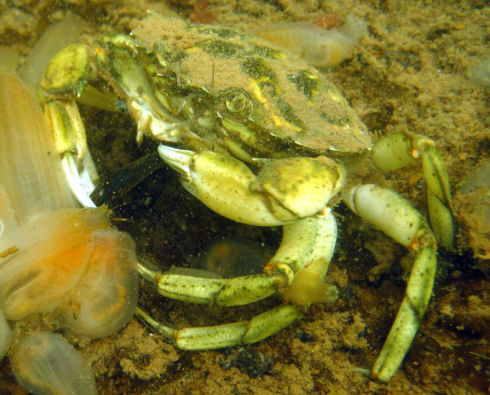
The Green Crab can be differentiated from the native rock crab by its dark mottles green colour and a row of distinctive yellow dots along the dorsal side of its shell. It is smaller than the rock crab and has distinctive points on the front edge of its shell. It is much more aggressive than the rock crab.
See a map of the areas currently populated with the green crab.
Oyster Thief
The oyster thief is a fast growing green seaplant that can reach lengths of 60 centimeters (2 feet). It has gained its name because when it attaches to oysters, the buoyancy of the plant can cause the oyster to float away.
Heavy growth of the oyster thief can also obscure oyster beds and increase the cost of harvesting.
It is able to spread quickly because as fragments of the plant break off, they are able to reattach and form a new plant. The plants also reproduce by releasing spores which can also travel some distance before they settle and form a new plant.
See a map of the areas currently populated with the oyster thief.
Clubbed Tunicate
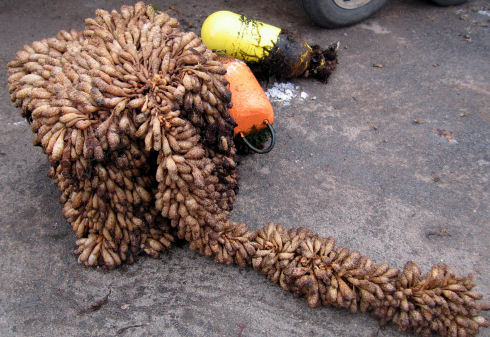
The clubbed tunicate was first found in PEI in 1998 in the Brudenell River. It has a cylindrical body and can grow up to 15 centimeters (six inches) in length. It attaches to a substrate by means of a holdfast at the end of a thin stock which protrudes from the posterior end. It has a warty surface with mottled colour. The smaller clubbed tunicates appear as miniature versions of the large ones with a smoother surface.
It is typically found in dense clumps growing below the water level on substrates such as docks, buoys, hulls of boats, etc. They attach very firmly, making them very difficult to remove.
The clubbed tunicate can live for several days out of water. The spawning period for the clubbed tunicate in PEI water is from the middle of June to the middle of October. The adults can spawn and the offspring can potentially infest new substrates within a period of a few days.
The clubbed tunicate poses a serious challenge for the mussel aquaculture industry in PEI. Both growers and processors have been affected in some areas. The fouling caused by the tunicates is problematic as the cost of production is increasing for both growers and processors. Restrictions on the movement of shellfish from tunicate infested areas have been put in place.
See a map of the areas currently populated with the clubbed tunicate.
Vase Tunicate
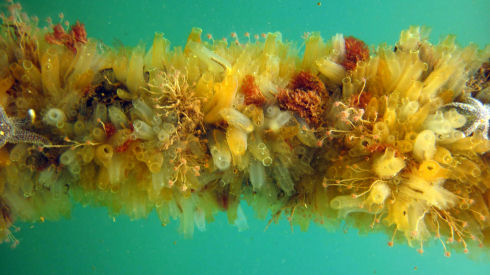
This tunicate attaches to hard substrates in subtidal areas. When present in large numbers it resembles a jelly-like mass.
The fouling caused by the tunicates is problematic as the cost of production is increasing for both growers and processors. Restrictions on the movement of shellfish from tunicate infested areas have been put in place.
See a map of the areas currently populated with the vase tunicate.
Golden Star Tunicate
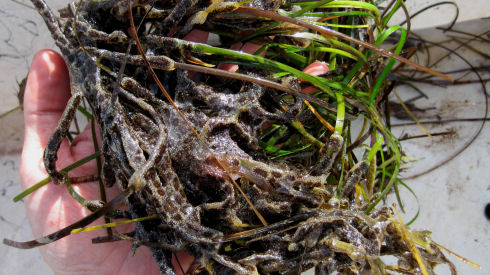
The golden star tunicate will attach to and grow on marine plants as well as hulls of boats and floating structures in the water column.
Small pieces of a colony can easily be transported within a body of water or to new bodies of water on pieces of floating marine plant material or inadvertently by water users.
See a map of the areas currently populated with the golden star tunicate.
Violet Tunicate
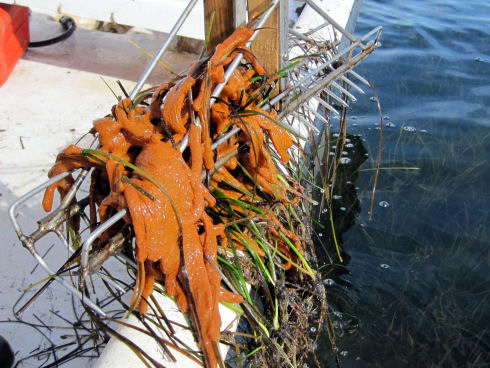
Small pieces of a colony can easily be transported within a body of water or to new bodies of water on pieces of floating marine plant material or inadvertently by water users.
See a map of the areas currently populated with the violet tunicate.
Oyster Drill
The oyster drill is emerging as a predator of oysters in PEI waters. It has been present since the early 1900's, but in recent years has become established in a growing number of oyster producing areas. The oyster drill is able to make a small hole in the oyster shell through which it is able to consume the oyster. The population can spawn from May to October, but each animal will only spawn once. The eggs are contained in egg casings, which are quite often found on hard objects such as rocks or oysters on the bottom.
See a map of the areas currently populated with the oyster drill.